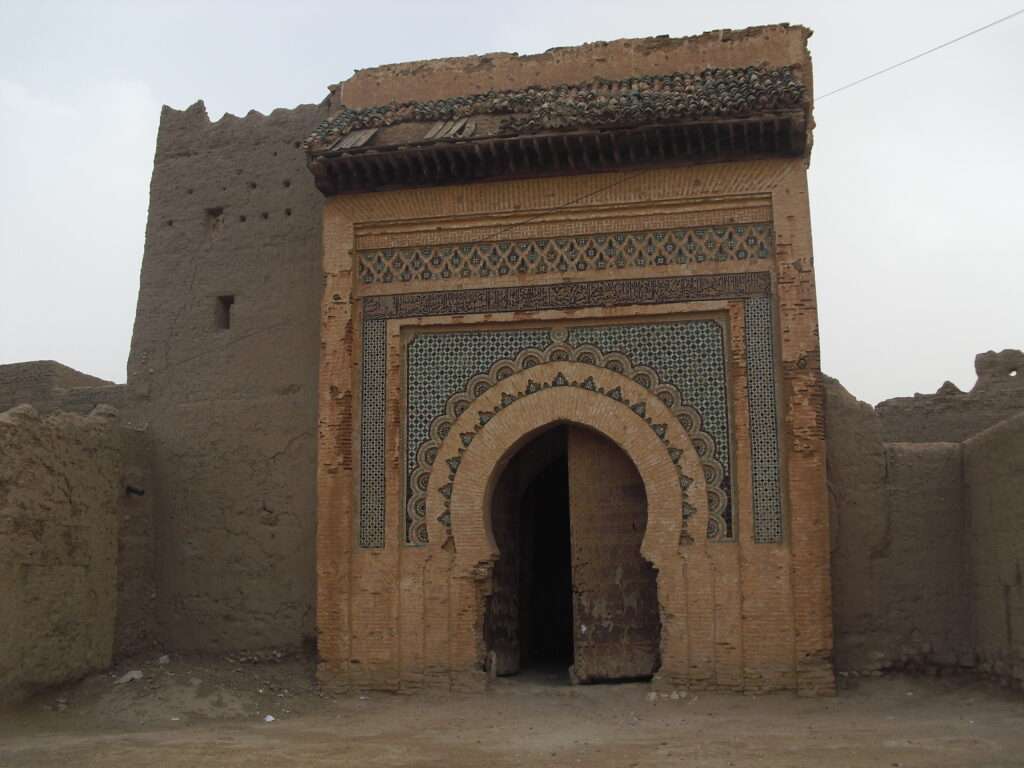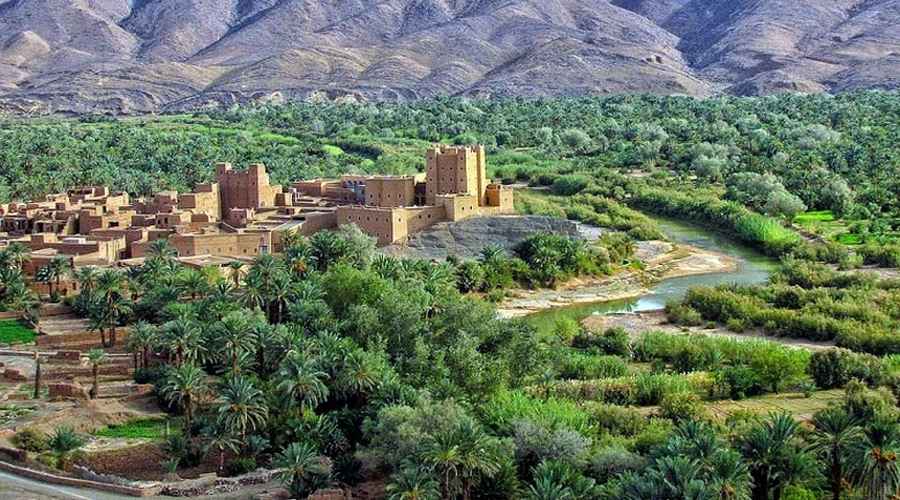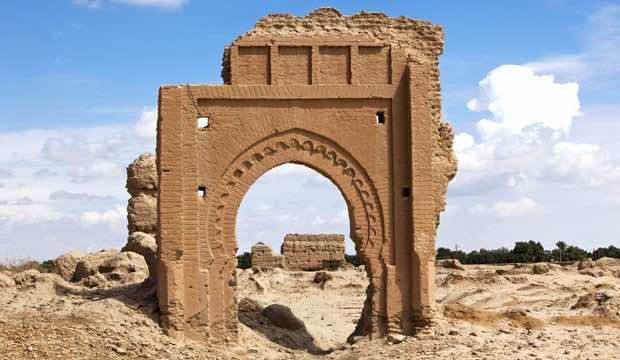Morocco is a land of history, mystery, and endless beauty, with routes that take you through ancient cities, majestic landscapes, and cultural treasures. One such journey is the route from Tinejdad to Erfoud and Rissani, a trip that weaves through ancient Ksour (fortified villages), oases, and significant historical sites. This region is not only a gateway to the Sahara Desert but also a reflection of Morocco’s rich heritage. Let’s dive into the captivating details of this enchanting journey.
Table of Contents
| Sr# | Headings |
|---|---|
| 1 | Introduction to Tinejdad, Erfoud, and Rissani |
| 2 | The Historic Ksour: Touroug and Achouria |
| 3 | North of Erfoud: Discovering Ksar Jrana |
| 4 | Exploring Maadid: A Living Architectural Wonder |
| 5 | The Mystique of Ksar Bathatha and Zaouia Jdida |
| 6 | Ksar El Maarka: The Legacy of Moulay Ismail |
| 7 | Meski: A Hidden Gem Surrounded by Palm Groves |
| 8 | Errachidia: Oasis and Restored Ksour |
| 9 | The High Ziz Valley and its Cultural Significance |
| 10 | The Tafilalet: Gateway to the Sahara |
| 11 | Exploring Sijilmassa: The Ruins of a Caravan City |
| 12 | The Palaces of the Alaouites |
| 13 | Ksar Abou Am: Traditional Architecture and Trade Influence |
| 14 | Kasbah Rissani: A Window into Morocco’s Past |
| 15 | Conclusion: The Road to the Desert and Beyond |
1. Introduction to Tinejdad, Erfoud, and Rissani
The journey from Tinejdad to Erfoud and Rissani takes travelers through an area steeped in history, offering a glimpse into Morocco’s past. This route showcases ancient settlements and Ksour that tell the story of a land shaped by trade, culture, and geography. As you travel, you’ll notice the changing landscapes—from lush oases to arid plains leading to the Sahara Desert.
But what makes this journey so special? Imagine walking through centuries-old fortresses, standing in awe of ancient architecture while learning the stories behind these places. It’s a road that connects the past to the present, offering a unique experience for adventurers and history buffs alike.

2. The Historic Ksour: Touroug and Achouria
As you leave Tinejdad and head towards Erfoud, you encounter the Ksour of Touroug and Achouria, two restored villages that have maintained their historic charm. The Ministry of Housing took part in restoring Touroug, while Achouria was revived by a local association in collaboration with the Oasis of the South Program.
These Ksour, with their earthy tones, blend beautifully into the surrounding landscapes. However, modernization efforts have altered some of their aesthetics—most notably in Achouria, where a large concrete mosque replaced the older, soil-built one, which had been much more in harmony with its surroundings.

3. North of Erfoud: Discovering Ksar Jrana
Just north of Erfoud, you’ll find Ksar Jrana. This fortress, nestled in the Tizimi Oasis, has undergone restoration, preserving its historical architecture. Ksar Jrana is easily accessible via a small track and remains one of the most picturesque spots along this route. This ksar offers a snapshot of life in this region, with its narrow streets and preserved walls giving you a sense of stepping back in time.

4. Exploring Maadid: A Living Architectural Wonder
One of the largest and most important Ksour in this region is Ksar Maadid. Located north of Erfoud, this architectural marvel consists of four districts separated by walls. Maadid’s historical significance and sheer size make it a frequently visited destination for tourists interested in Moroccan history.
Maadid has survived the test of time and is still inhabited today. However, the replacement of its original gate with a concrete one in the 1960s has somewhat diminished its original charm. Despite this, Maadid remains a remarkable example of traditional Moroccan architecture and communal living.

5. The Mystique of Ksar Bathatha and Zaouia Jdida
Further along the road, past the arid landscape north of Maadid, lies Ksar Bathatha. This ksar, with its double gates and well-preserved streets, is a testament to Morocco’s architectural legacy. Not far from Bathatha is Zaouia Jdida, another ksar that is still inhabited today. Walking through these ksour, you can’t help but feel a connection to the past, as these villages have stood the test of time.

6. Ksar El Maarka: The Legacy of Moulay Ismail
Next on the journey is Ksar El Maarka, an ancient palace built during the reign of Moulay Ismail, one of Morocco’s most famous rulers. The palace’s monumental gate is adorned with mosaics and intricately sculpted plaster. Though the interior has fallen into ruins, the gate still stands as a reminder of the Alaouite dynasty’s influence in the region.

7. Meski: A Hidden Gem Surrounded by Palm Groves
The oasis town of Meski is known for its picturesque location atop a rocky crag. Its lush palm groves provide a stark contrast to the desert surroundings, making it a refreshing stop along your journey. Meski is also home to a natural spring, which has been transformed into a pool, offering a peaceful retreat for both locals and visitors.

8. Errachidia: Oasis and Restored Ksour
Though Errachidia is a modern town, it’s located in the heart of the Mdagra Oasis, home to 37 Ksour. Many of these ksour have been destroyed by floods, but some, like Ksar Targa, have been restored and are still inhabited. These fortresses are remnants of a time when this region was a crucial part of Morocco’s trade routes, with Errachidia serving as a key oasis town.

9. The High Ziz Valley and its Cultural Significance
As you move north from Errachidia, the landscape transitions into the High Ziz Valley. This area is not only known for its breathtaking landscapes but also for its historical importance. The valley is dotted with ksour like Ait Atmane, Aït Immas, and Tamarkecht, which have played a significant role in the region’s history.
The Ziz River flows through this valley, nourishing the palm groves that have sustained life in this region for centuries. The lush greenery of the valley is framed by towering rock formations, creating a stunning contrast.

10. The Tafilalet: Gateway to the Sahara
South of Erfoud lies the vast Tafilalet, home to one of the largest palm groves in Morocco. Historically, the Tafilalet was an important stop along the caravan routes between Fez and sub-Saharan Africa. The region is famous for the ruins of Sijilmassa, a once-thriving city that was a major center of trade during the eighth to fourteenth centuries.
Although drought has taken its toll on the palm groves, the Tafilalet remains a culturally rich region, with over 50 ksour still inhabited today. This area is also the birthplace of the Alaouite dynasty, which has ruled Morocco since the seventeenth century.

11. Exploring Sijilmassa: The Ruins of a Caravan City
The ruins of Sijilmassa are a must-see for history enthusiasts. Once a bustling city, Sijilmassa was an important hub for the trans-Saharan trade routes. Today, its ruins offer a glimpse into the grandeur that once was, with remnants of buildings that date back centuries. Walking through Sijilmassa, you can almost imagine the traders and caravans that once passed through this desert city.

12. The Palaces of the Alaouites
In addition to the ksour, the Tafilalet region is home to several palaces built by the Alaouite dynasty. These include El Fida, Oulad Abdelhalim, and Abbar, each with its own unique history and architectural style. The El Fida Palace has been restored and is open to visitors, while the Abbar Mosque stands as a symbol of the region’s religious and cultural significance.
13. Ksar Abou Am: Traditional Architecture and Trade Influence
Located in Rissani, Ksar Abou Am is one of the most visited ksour in the region. The ksar has been restored and is fully inhabited today. Its gate, designed in an urban style, reflects the influence of Fez on the trade routes that once passed through this area. Ksar Abou Am is a perfect example of traditional Moroccan architecture, with its winding streets and high walls.

14. Kasbah Rissani: A Window into Morocco’s Past
Just north of Ksar Abou Am stands the Kasbah Rissani, a fort built during the thirteenth or fourteenth century. This kasbah is now partially used as a museum, where visitors can learn about the history of the region and its importance as a trading hub.

15. Conclusion: The Road to the Desert and Beyond
The route from Tinejdad to Erfoud and Rissani is a journey through time. It’s a road that takes you from the ancient past to the present, offering a window into Morocco’s rich history and culture. From ksour and oases to the ruins of Sijilmassa and the grandeur of the Alaouite palaces, this journey is a testament to the enduring legacy of Morocco’s past.
As you continue along this route, you’ll eventually find yourself at the edge of the Sahara Desert, ready to embark on the next chapter of your adventure. Whether you’re exploring the ksour, walking through the palm groves of the Tafilalet, or gazing upon the vastness of the desert, this journey will leave an indelible mark on your soul.
Leave a Reply